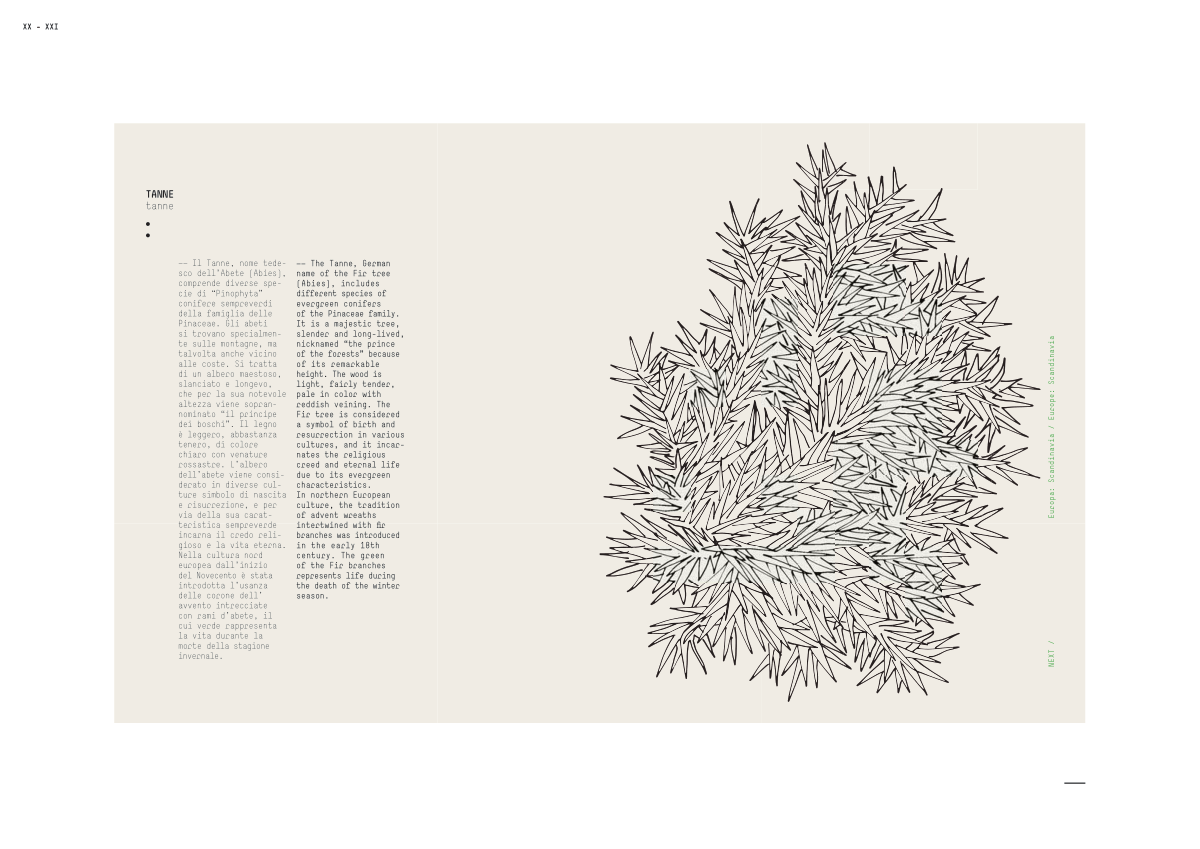NEXT /
TANNE
tanne
XX - XXI
—— The Tanne, German
name of the Fir tree
(Abies), includes
different species of
evergreen conifers
of the Pinaceae family.
It is a majestic tree,
slender and long-lived,
nicknamed “the prince
of the forests” because
of its remarkable
height. The wood is
light, fairly tender,
pale in color with
reddish veining. The
Fir tree is considered
a symbol of birth and
resurrection in various
cultures, and it incar-
nates the religious
creed and eternal life
due to its evergreen
characteristics.
In northern European
culture, the tradition
of advent wreaths
intertwined with fir
branches was introduced
in the early 18th
century. The green
of the Fir branches
represents life during
the death of the winter
season.
—— Il Tanne, nome tede-
sco dell’Abete (Abies),
comprende diverse spe-
cie di “Pinophyta”
conifere sempreverdi
della famiglia delle
Pinaceae. Gli abeti
si trovano specialmen-
te sulle montagne, ma
talvolta anche vicino
alle coste. Si tratta
di un albero maestoso,
slanciato e longevo,
che per la sua notevole
altezza viene sopran-
nominato “il principe
dei boschi”. Il legno
è leggero, abbastanza
tenero, di colore
chiaro con venature
rossastre. L’albero
dell’abete viene consi-
derato in diverse cul-
ture simbolo di nascita
e risurrezione, e per
via della sua carat-
teristica sempreverde
incarna il credo reli-
gioso e la vita eterna.
Nella cultura nord
europea dall’inizio
del Novecento è stata
introdotta l’usanza
delle corone dell’
avvento intrecciate
con rami d’abete, il
cui verde rappresenta
la vita durante la
morte della stagione
invernale.
:
Europa: Scandinavia / Europe: Scandinavia


